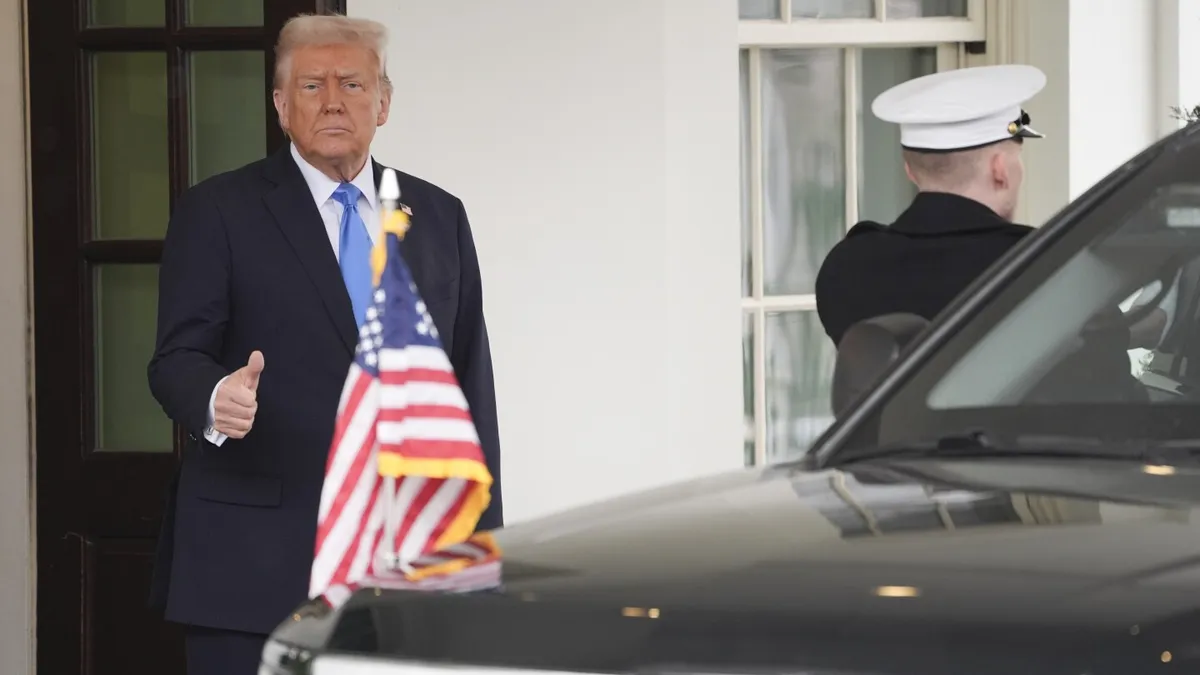
WASHINGTON (AP) — President Donald Trump is taking further steps to disrupt the global trade system, with plans to sign an order that would make U.S. tariffs on imports match the tax rates applied by other countries. This move is expected as soon as Wednesday.
"It's time to be reciprocal," Trump stated earlier this week to reporters. "You'll be hearing that word a lot. Reciprocal. If they charge us, we charge them.” The president hinted that the order might come on Tuesday or Wednesday. However, when Tuesday passed without an official announcement, Trump was asked if he would sign the order on Wednesday and responded, "We'll see what happens."
Since taking office, Trump has enacted a series of tariffs, fully embracing the trajectory of the U.S. economy. This strategic gamble aims to leverage his economic policies to deliver meaningful results for voters. However, Trump acknowledges that the import taxes might cause some financial discomfort, potentially leading to inflation and economic disruptions. The real impact will depend on the specifics of the tariffs and how other nations respond.
A reciprocal tariffs order could lead to a significant tax increase, primarily affecting U.S. consumers and businesses. The Census Bureau reported total imports of $4.1 trillion last year. Such tariffs could trigger retaliatory actions by trading partners, possibly unsettling global growth and altering the U.S.'s relationships with allies and rivals alike.
By signing the order, Trump would fulfill his long-standing promise to raise taxes on most imported goods, a notable divergence from his White House predecessors who treated tariffs as either strategic tools or barriers to be reduced. Trump has advocated for a return to the 1890s when taxes on imports were the primary source of government revenue.
However, if job gains do not materialize and inflation remains high, it could become an easy target for Democratic lawmakers. They argue that Trump's policies benefit the ultra-wealthy at the expense of the middle class. Senate Democratic leader Chuck Schumer of New York stated, "No matter which way you slice it, costs are going to climb for consumers."
Trump's administration has already imposed 10% tariffs on China due to its role in the production of the illicit drug fentanyl, resulting in retaliatory measures from China. Trump has also indicated he is prepared to impose tariffs on Mexico and Canada in response to illegal immigration and drug smuggling. Additionally, Trump closed exemptions to his 2018 steel and aluminum tariffs and raised aluminum tariff rates.
In retaliation, the European Union has indicated that unjustified tariffs on the EU will lead to countermeasures. This could mean new taxes on U.S. goods like motorcycles, jeans, bourbon, and peanut butter. Mexico and Canada, America's largest trading partners, are also preparing their counter-strategies.
Several Trump aides have privately noted that Trump's primary objective with tariffs is reciprocity. He also views tariffs as a diplomatic tool to encourage Canada and Mexico to curb illegal immigration and drug trafficking into the U.S. Trump has repeatedly suggested that tariffs could generate revenue to offset planned income tax cuts.
However, before Trump formally signed the order, analysts at Goldman Sachs suggested it was unlikely to be the final say on tariffs. Analysts at the investment bank noted, "Even if President Trump views reciprocal tariffs as an alternative to more sweeping measures at the moment, we are only in the fourth week of a four-year presidential term, and it seems likely there will be many further tariff announcements."
Michael Zezas, a strategist at Morgan Stanley, highlighted that the "tariff trajectory" will influence growth, inflation, interest rates, and Federal Reserve policies this year. "It's a major shift from the era of globalization, when companies reduced expenses by seeking lower-cost labor and materials offshore," Zezas commented, noting that this transition will likely span several years, posing challenges for some and opportunities for others.